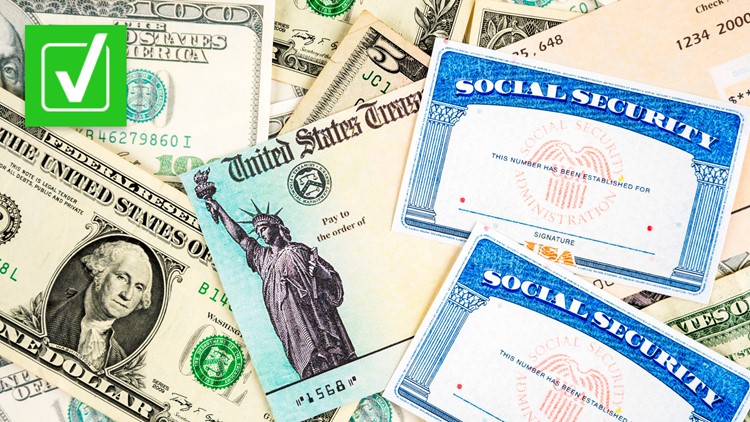VERIFY often fields questions about Social Security benefits, which provide people with an income when they retire or can’t work due to disability.
In recent weeks, amid concerns that a now-averted U.S. default would have led to delayed or missing Social Security checks, many readers have asked about the program’s funding.
One person wanted to know whether the federal government borrows Social Security funds.
THE QUESTION
Does the federal government borrow Social Security funds?
THE SOURCES
- The Social Security Administration
- The Center on Budget and Policy Priorities
- National Academy of Social Insurance
- Congressional Research Service
- AARP
- Mary Johnson, Social Security and Medicare policy analyst for The Senior Citizens League
THE ANSWER
Yes, the federal government borrows Social Security funds, but it is required to pay the money back with interest.
WHAT WE FOUND
Social Security is primarily funded through a dedicated payroll tax, which is deducted from a person’s paycheck. The program also receives funding from income taxes that some beneficiaries have to pay on a portion of their benefits, as well as interest from the trust funds’ investment holdings.
Social Security income is deposited into two financial accounts called trust funds – the Old-Age Survivors Insurance (OASI) Trust Fund and the Disability Insurance (DI) Trust Fund. The trust funds are used to pay out Social Security benefits and cover administrative costs, according to the Social Security Administration (SSA).
The trust funds hold money that isn’t needed in the current year to pay benefits and other expenses. By law, that money is invested in special Treasury bonds that are guaranteed by the U.S. government and earn interest, SSA explains.
“Those bonds basically are an IOU from the government to Social Security,” Mary Johnson, Social Security and Medicare policy analyst for The Senior Citizens League, told VERIFY. “In other words, the Social Security trust fund, which is what is authorized to pay benefits, has been loaning money to the U.S. government.”
When a person buys a Treasury bond, they are also loaning money to the U.S. government for a set period of time and will get it back in the future with interest.
The Treasury needs to borrow money when the federal government’s budget is in a deficit, meaning its spending exceeds revenues from taxes and other sources.
According to the Center for Budget Policy and Priorities (CBPP), the Treasury “always uses whatever cash is on hand,” whether that’s from Social Security contributions or other sources, to pay the government’s bills before it borrows more money from the public. The public refers to all lenders that are not federal trust funds, including individuals, the Federal Reserve system, and foreign investors.
Some people have claimed over the years that the federal government’s borrowing from Social Security equates to “stealing.” But that’s not true. Johnson called these claims “misinformation.”
The Treasury is obligated to pay back the money it borrows with interest, according to AARP and the Congressional Research Service, and the SSA says the federal government has never failed to do so.
That interest is income for Social Security, which helps to provide funding for benefits, Johnson said.
Throughout its history, Social Security has generally taken in more money than it paid out in benefits. But the program has been running cash deficits since 2010, meaning that its total tax revenue has fallen short of benefit payments, according to the Committee for a Responsible Federal Budget.
“As Social Security runs those cash deficits, the trust funds will ‘redeem’ their Treasury securities and the Treasury will have to borrow funds from the public to cover the shortfalls,” the Peter G. Peterson Foundation explains.
Social Security's board of trustees estimated in its most recent annual report that the combined trust funds will run out of cash reserves by 2034. But that does not mean the program will "go broke," as people have claimed for years.
If the reserves are exhausted, Social Security programs will continue to pay benefits out of annual tax revenue, AARP explains. The benefit payments would just have to be lower, amounting to about 80% of what beneficiaries would normally be entitled to collect in 2034.



